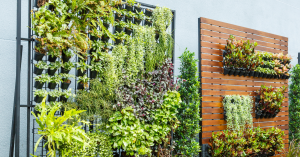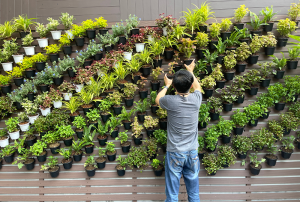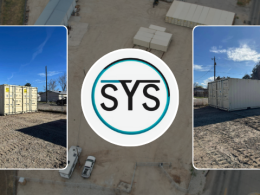Introduction
Indoor vertical garden designs help you grow fresh plants without a large yard. Vertical gardening at home uses walls, shelves, or towers to hold pots and planters. An indoor herb vertical garden can give you kitchen-ready basil, mint, and thyme any time. These space-saving vertical garden ideas fit studios and living rooms alike. You can choose soil-based planters or hydroponic vertical garden systems that use water instead of soil. In this article, you will find year-round indoor gardening tips for planning, planting, and caring for a thriving green wall in any season.
What is an Indoor Vertical Garden?
Indoor vertical gardens are walls or structures that hold plants in layers or tiers. They let you use vertical space instead of floor area. A simple example is a shelf with pots stacked in tiers. A more advanced option is a self-watering hydroponic tower.
Definition and Main Benefits
An indoor vertical garden is a way to grow plants on a vertical surface. It can be a frame with pockets, a freestanding tower, or a tiered shelf. The main benefits are saving floor space and creating a living wall that adds beauty. A vertical garden can improve air quality and boost mood.
Why Choose Vertical Over Traditional Pots
Vertical setups let you grow more in less space. You get easier access to each plant for pruning and harvesting. Vertical gardens can act as natural room dividers or accents on blank walls. They also offer better light exposure for each plant when placed near a window.
Types of Indoor Vertical Garden Designs

There are several popular styles to fit different needs and budgets.
Pocket Planter Systems
Pocket planters hang on the wall like a rug. They are usually made of felt or plastic. Each pocket holds soil and a plant. This system is light and easy to install. You can grow herbs, small greens, and succulents.
Shelf and Frame Gardens
Shelf gardens use tiered boards or metal racks. You arrange pots on each level. Frames can hold hanging planters or small containers. This style doubles as a display for décor items. Shelf systems work well for starters.
Hydroponic Tower Systems
Hydroponic towers circulate water mixed with liquid fertilizer. Plants grow in small net pots along the tower. These systems often include a pump and timer. They are more expensive but need less watering. Hydroponic towers can grow lettuce, spinach, and herbs quickly.
Planning Your Vertical Garden
A good plan helps you avoid mistakes and extra costs.
Assessing Your Space
Measure the wall or corner where you want the garden. Check how much weight it can hold. Look at nearby windows for light. Make sure you can reach each level for pruning or watering.
Selecting Containers and Materials
Choose materials that resist moisture. Plastic, metal, and treated wood work well. Make sure containers have drainage holes or a water-catch tray. Felt pockets and fabric bags are light and easy to swap out.
Lighting Considerations
Most edible plants need at least six hours of light a day. Natural light from south-facing windows is best. If your spot is dim, add LED grow lights. Clip-on and strip lights are affordable. Position lights close to plants but avoid overheating.
Best Plants for Year-Round Harvest

Not all plants thrive indoors. Pick ones that like steady temperatures and indirect light.
Herbs and Leafy Greens
Basil, mint, parsley, and cilantro grow well indoors. Leafy greens like lettuce, spinach, and arugula also do well. These plants stay small and fit into vertical pockets or small pots.
Compact Fruit and Veggie Options
Cherry tomatoes, strawberries, and peppers can work in deeper planters. Choose dwarf or patio varieties. These produce fruit over many weeks when you prune for airflow.
Seasonal Rotations and Crop Planning
Rotate your plants every eight to ten weeks. Start new seeds in small pots before ending the last crop. This keeps fresh greens and herbs on hand all year.
Care and Maintenance Tips

Consistent care leads to a healthy vertical garden.
Watering Practices
Soil-based systems often need watering two to three times per week. Check moisture by touching the top of the soil. Hydroponic towers may only need a weekly nutrient refill. Always follow the system manual.
Nutrient Management
Indoor plants rely on you for fertilizer. Use a balanced liquid feed every two weeks for soil pots. Hydroponic systems use measured nutrient solutions more often. Flush towers monthly to prevent salt build-up.
Pruning, Training, and Support
Trim off dead or yellow leaves to boost growth. Pinch back herbs to encourage bushier plants. Tie vines and heavier fruiting stems to small stakes or hooks. Support helps plants get light and keeps the wall neat.
DIY vs. Ready-Made Vertical Garden Kits
You can build your own system or buy a kit.
DIY Advantages and Trade-Offs
DIY lets you pick exact materials and sizes. You can upcycle items like wooden pallets or plastic bottles. DIY builds often cost less but need time and basic tools. Mistakes can lead to leaks or poor plant health.
Ready-Made Kit Benefits
Kits come with all parts and clear instructions. Many include built-in irrigation and mounting hardware. Kits cost more but save time and guesswork. They often have support from the maker if you have issues.
Common Challenges and Solutions

Even simple vertical gardens may face issues.
Indoor humidity can drop too low. Place a small humidifier nearby or mist plants daily. Poor air flow can invite pests. Use a small fan to circulate air gently. Leaf mold from high humidity can be wiped off with water and mild soap. If you see yellow leaves, check for root rot by pulling a plant and inspecting its roots.
Comparison of Vertical Garden Designs
Here is a quick look at popular systems and what they offer:
| Design Type | Ideal Plants | Watering Method | Maintenance Level |
|---|---|---|---|
| Pocket Planters | Herbs, small greens | Manual drip or spray | Low |
| Shelf and Frame Gardens | Succulents, compact veggies | Manual fill trays | Medium |
| Hydroponic Towers | Leafy greens, herbs, strawberries | Automated pump system | Medium–High |
Choose the design that matches your skill level, budget, and plant choices.
Conclusion
Indoor vertical garden designs allow you to grow fresh herbs, greens, and small fruits in any room. By using vertical gardening at home, you make the most of limited space. Whether you pick pocket planters, shelf gardens, or hydroponic vertical garden systems, each design has its own perks. Plan your garden by assessing space, choosing the right containers, and adding the right light. Select plants that fit your style and follow simple care tips for watering, feeding, and pruning. With a little effort, you can enjoy a year-round indoor harvest that adds flavor to every meal.
Ready to turn your wall into a living pantry? Visit our online store to find the perfect vertical garden kit or download our free guide to get started today!












